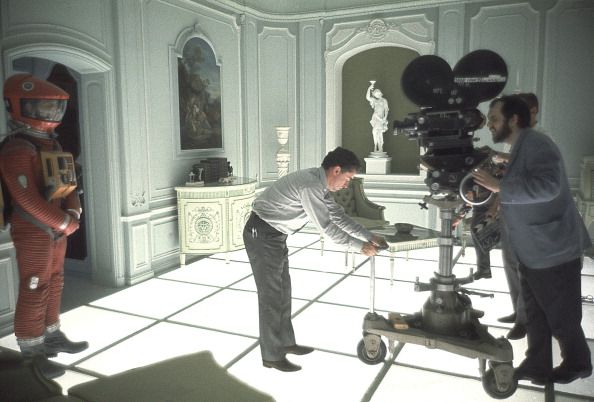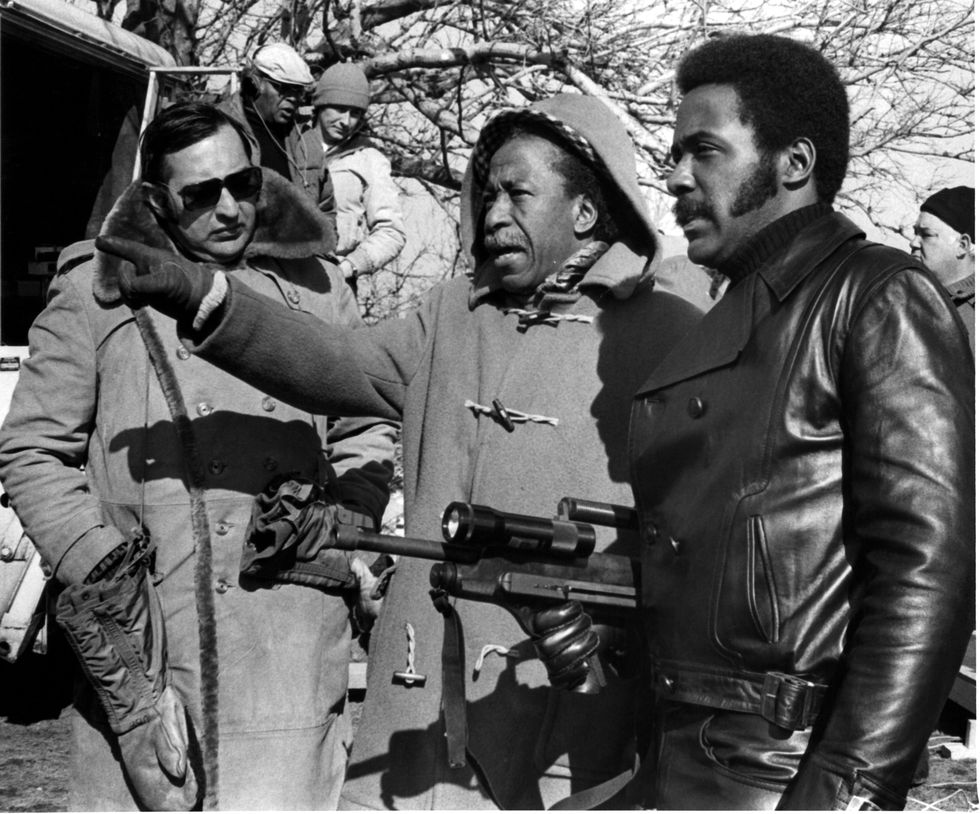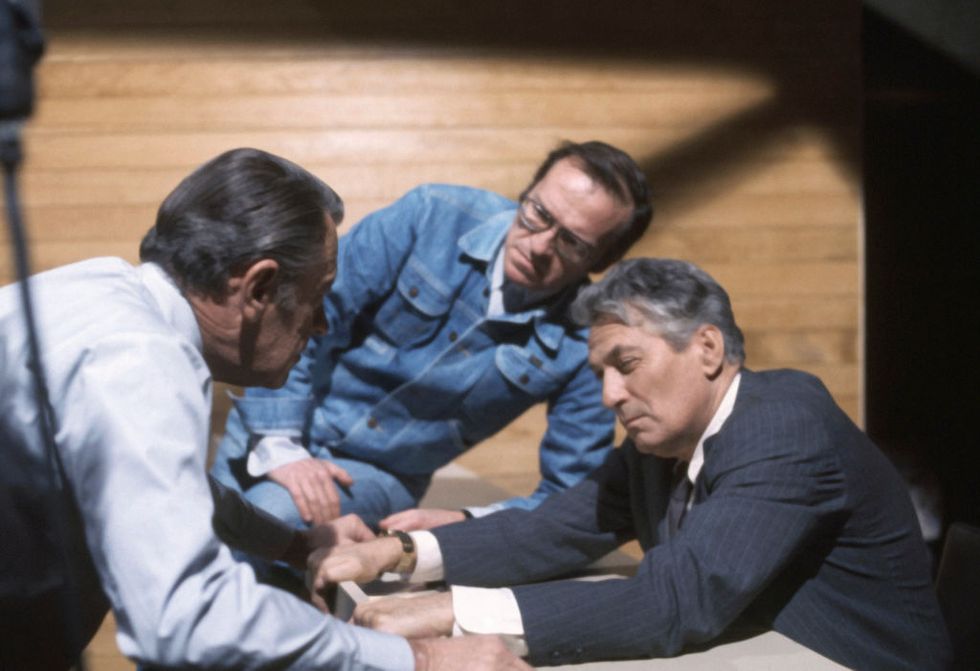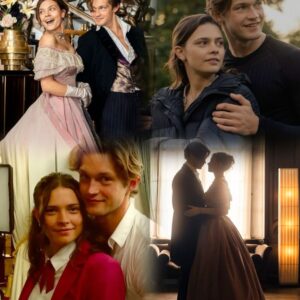Directors aren’t always just barking orders from a folding chair.

Filmmaking is practically impossible in the best of times nowadays, but you could argue it was even harder back when there were zero digital tricks that directors could use to realize whatever wild words were on the screenplay. The fact is, it doesn’t just take a genius director to make it work, since every member of the crew plays a vital role, from assistants to department heads. The fact that we have movies at all is a miracle, so let’s take a look at how those miracles got made with these 12 photos of directors on classic film sets.
 John Kobal Foundation//Getty Images
John Kobal Foundation//Getty Images
1
Orson Welles – Citizen Kane (1941)
Orson Welles co-wrote, directed, and starred in Citizen Kane, considered by some to be the greatest film from the era, and of all time. A quasi-biopic which created the fictional character Charles Foster Kane, an amalgamation of several media moguls and tycoons at the time, Citizen Kane featured a nonlinear narrative and strong stylistic choices which were controversial at the time.
 Hulton Archive//Getty Images
Hulton Archive//Getty Images
2
Howard Hawks – His Girl Friday (1940)
Director Howard Hawks sits with the leads Cary Grant and Rosalind Russell while shooting the comedy His Girl Friday. It was revolutionary at the time for its speedy dialogue, with actors being encouraged to speak over each other in a more organic way and ad-lib lines where they liked.
3
John Huston – The Maltese Falcon (1941)
 Bettmann//Getty Images
Bettmann//Getty Images
Legendary director John Huston is directing his father, the actor Walter Huston in an uncredited role in his debut feature The Maltese Falcon. Huston reportedly planned the film meticulously, with detailed notes and sketches for how he envisioned scenes accompanying his screenplay.
 John Kobal Foundation//Getty Images
John Kobal Foundation//Getty Images
4
Billy Wilder – Double Indemnity (1944)
This period was a high point for film noir, and Double Indemnity by Billy Wilder has a case for being one of the very greatest films in the genre. It was hugely influential for later film noirs, with the cinematographer John F. Seitz using now-classic techniques like “venetian blind” lighting to cast bars of light over characters.
 Hulton Archive//Getty Images
Hulton Archive//Getty Images
5
Alfred Hitchcock – Psycho (1960)
Here’s Alfred Hitchcock with the slate, shooting one of his many masterpieces—the horror film Psycho. You’ve got to also hand it to cinematographer John L. Russell, whose Oscar-nominated photography brought this film to the next level. If you somehow don’t know the twist of this film yet, give it a watch!
6
David Lean – Lawrence of Arabia (1962)
 Columbia TriStar//Getty Images
Columbia TriStar//Getty Images
Lean glances through the camera on a shoot by St. Paul’s cathedral, London. This historical epic drama is based on the wild life experiences of T.E. Lawrence, though they absolutely took creative liberties for the film. Other filming locations for Lawrence of Arabia included deserts in Jordan, Morocco, as well as Almería and Doñana in Spain.
7
Stanley Kubrick – 2001: A Space Odyssey (1966)
 Keith Hamshere//Getty Images
Keith Hamshere//Getty Images
Spoiler alert for for an almost 60-year-old movie, but here’s a behind-the-scenes peek at the mind-bending final scene from his wildly ambitious sci-fi epic 2001: A Space Odyssey. Even after they was done shooting actors, Kubrick and the special effects crew created tons of impressive in-camera effects like the intricate models of spaceships and the flashing lights in the “Stargate” sequence.
8
Gordon Parks – Shaft’s Big Score (1972)
 Michael Ochs Archives//Getty Images
Michael Ochs Archives//Getty Images
The legendary director and photographer Gordon Parks directs star Richard Roundtree for a scene in Shaft’s Big Score, the follow-up to their stellar blaxploitation action crime film Shaft. The original film was such a smash that Parks was given a budget of nearly $2 million to expand on his vision.
9
François Truffait – Day for Night (1973)
 John Springer Collection//Getty Images
John Springer Collection//Getty Images
Truffaut gives notes to star Jacqueline Bisset for his acclaimed romantic dramedy Day For Night, or La Nuit Americane in French. The film’s story takes place on a film set in its own right, so there’s a melodrama within a comedy drama going on here!
10
Sidney Lumet – Network (1976)
 Screen Archives//Getty Images
Screen Archives//Getty Images
Sidney Lumet (center) is directing Peter Finch and William Holden in a scene from the biting satire film Network, which he directed from a script by Paddy Chayefsky.
11
Ingmar Bergman – Fanny and Alexander (1982)
 Sunset Boulevard//Getty Images
Sunset Boulevard//Getty Images
The legendary Swedish director of Persona and The Seventh Seal films a scene with his director of photography, Sven Nykvist, for this semi-autobiographical period drama following two siblings in a well-off family in 1907 Sweden.
12
Robert Altman – Vincent & Theo (1990)
 Micheline Pelletier//Getty Images
Micheline Pelletier//Getty Images
The masterful director Robert Altman dramatized the life of painter Vincent Van Gogh and his brother Theo in this drama. He collaborated with his son, Stephen Altman, on this film with Stephen acting as the production designer.





